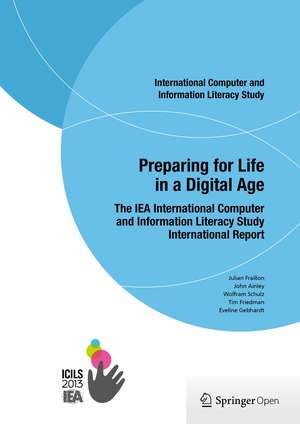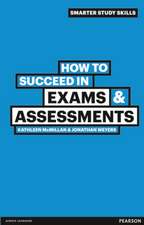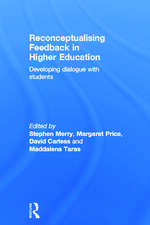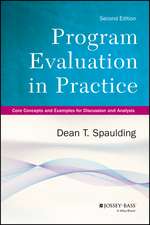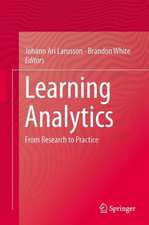Preparing for Life in a Digital Age: The IEA International Computer and Information Literacy Study International Report
Autor Julian Fraillon, John Ainley, Wolfram Schulz, Tim Friedman, Eveline Gebhardten Limba Engleză Paperback – 14 apr 2015
The study was conducted under the auspices of the International Association for the Evaluation of Educational Achievement (IEA) and builds on a series of earlier IEA studies focusing on ICT in education.
Data were gathered from almost 60,000 Grade 8 students in more than 3,300 schools from 21 education systems. This information was augmented by data from almost 35,000 teachers in those schools and by contextual data collected from school ICT-coordinators, school principals and the ICILS national research centers.
The IEA ICILS team systematically investigated differences among the participating countries in students’ CIL outcomes, how participating countries were providing CIL-related education and how confident teachers were in using ICT in their pedagogical practice. The team also explored differences within and across countries with respect to relationships between CIL education outcomes and student characteristics and school contexts.
In general, the study findings presented in this international report challenge the notion of young people as “digital natives” with a self-developed capacity to use digital technology. The large variations in CIL proficiency within and across the ICILS countries suggest it is naive to expect young people to develop CIL in the absence of coherent learning programs. Findings also indicate that system- and school-level planning needs to focus on increasing teacher expertise in using ICT for pedagogical purposes if such programs are to have the desired effect.
The report furthermore presents an empirically derived scale and description of CIL learning that educational stakeholders can reference when deliberating about CIL education and use to monitor change in CIL over time.
Preț: 435.38 lei
Nou
Puncte Express: 653
Preț estimativ în valută:
83.31€ • 89.09$ • 69.46£
83.31€ • 89.09$ • 69.46£
Carte tipărită la comandă
Livrare economică 18 aprilie-02 mai
Preluare comenzi: 021 569.72.76
Specificații
ISBN-13: 9783319142210
ISBN-10: 3319142216
Pagini: 291
Ilustrații: XIII, 291 p. 28 illus.
Dimensiuni: 210 x 297 x 15 mm
Greutate: 0.75 kg
Ediția:2014
Editura: Springer International Publishing
Colecția Springer
Locul publicării:Cham, Switzerland
ISBN-10: 3319142216
Pagini: 291
Ilustrații: XIII, 291 p. 28 illus.
Dimensiuni: 210 x 297 x 15 mm
Greutate: 0.75 kg
Ediția:2014
Editura: Springer International Publishing
Colecția Springer
Locul publicării:Cham, Switzerland
Public țintă
ResearchCuprins
Foreword.- List of Tables and Figures.- Executive Summary.- 1. Introduction.- 2. The Contexts for Education on Computer and Information Literacy.- 3. Students’ Computer and Information Literacy.- 4. The Influence of Students’ Personal and Home Background on Computer and Information Literacy.- 5. Students’ Use of and Engagement with ICT at Home and School.- 6. School Environments for Teaching and Learning Computer and Information Literacy.- 7. Teaching with and about Information and Communication Technologies.- 8. Investigating Variations in Computer and Information Literacy.- 9. Conclusions and Discussion.- Appendices.- References.- Tables and Figures.
Textul de pe ultima copertă
Ability to use information and communication technologies (ICT) is an imperative for effective participation in today’s digital age. Schools worldwide are responding to the need to provide young people with that ability. But how effective are they in this regard? The IEA International Computer and Information Literacy Study (ICILS) responded to this question by studying the extent to which young people have developed computer and information literacy (CIL), which is defined as the ability to use computers to investigate, create, and communicate with others at home, school, the workplace and in society.
The study was conducted under the auspices of the International Association for the Evaluation of Educational Achievement (IEA) and builds on a series of earlier IEA studies focusing on ICT in education.
Data were gathered from almost 60,000 Grade 8 students in more than 3,300 schools from 21 education systems. This information was augmented by data from almost 35,000 teachers in those schools and by contextual data collected from school ICT-coordinators, school principals, and the ICILS national research centers.
The IEA ICILS team systematically investigated differences among the participating countries in students’ CIL outcomes, how participating countries were providing CIL-related education, and how confident teachers were in using ICT in their pedagogical practice. The team also explored differences within and across countries with respect to relationships between CIL education outcomes and student characteristics and school contexts.
In general, the study findings presented in this international report challenge the notion of young people as “digital natives” with a self-developed capacity to use digital technology. The large variations in CIL proficiency within and across the ICILS countries suggest it is naive to expect young people to develop CIL in the absence of coherent learning programs. Findingsalso indicate that system- and school-level planning needs to focus on increasing teacher expertise in using ICT for pedagogical purposes if such programs are to have the desired effect.
The report furthermore presents an empirically derived scale and description of CIL learning that educational stakeholders can reference when deliberating about CIL education and use to monitor change in CIL over time.
The study was conducted under the auspices of the International Association for the Evaluation of Educational Achievement (IEA) and builds on a series of earlier IEA studies focusing on ICT in education.
Data were gathered from almost 60,000 Grade 8 students in more than 3,300 schools from 21 education systems. This information was augmented by data from almost 35,000 teachers in those schools and by contextual data collected from school ICT-coordinators, school principals, and the ICILS national research centers.
The IEA ICILS team systematically investigated differences among the participating countries in students’ CIL outcomes, how participating countries were providing CIL-related education, and how confident teachers were in using ICT in their pedagogical practice. The team also explored differences within and across countries with respect to relationships between CIL education outcomes and student characteristics and school contexts.
In general, the study findings presented in this international report challenge the notion of young people as “digital natives” with a self-developed capacity to use digital technology. The large variations in CIL proficiency within and across the ICILS countries suggest it is naive to expect young people to develop CIL in the absence of coherent learning programs. Findingsalso indicate that system- and school-level planning needs to focus on increasing teacher expertise in using ICT for pedagogical purposes if such programs are to have the desired effect.
The report furthermore presents an empirically derived scale and description of CIL learning that educational stakeholders can reference when deliberating about CIL education and use to monitor change in CIL over time.
Caracteristici
The first international comparative study that investigates the ways in which young people are developing computer and information literacy to support their capacity to participate in the digital age Establishes a cross national, empirical foundation for describing the competencies underpinning computer and information literacy Provides an overarching international perspective on the ICILS data collected across 21 education systems Presents an empirically derived scale and description of CIL learning that policymakers and scholars can use when deliberating about CIL education A key resource for monitoring educational quality and progress within individual countries and across a broad international context Includes supplementary material: sn.pub/extras
